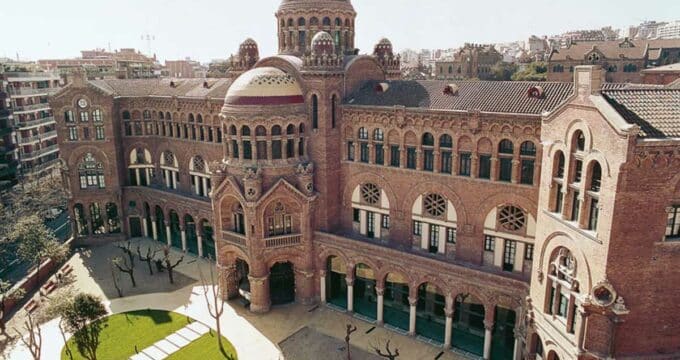Sub-Saharan students in Morocco: both welcomed and shunned
At the beginning of each academic year, hundreds of students from sub-Saharan countries flock to Morocco to enrol in higher education, a testament to the country’s generous scholarships and diverse fields of study. But after arriving, these students are often confronted with racism that prevents them from participating in Moroccan society and sometimes even in university life. “Integrating in Morocco has not been easy,” said Michel Loua, of Guinea, a student who arrived two years ago. The streets are not always safe for sub-Saharans, he says, and he wishes there were tournaments where he could play football with Moroccans. Morocco has been a country of emigration, a gateway to Europe, for decades, but now also has become an immigration and education hub. It has forged bilateral agreements with sub-Saharan countries, like Mali and Senegal, to create stronger political and economic ties. Most of the sub-Saharan students come on scholarships granted by the Moroccan government through the Moroccan Agency of International Cooperation (AMCI). The number of these students has been steadily increasing over the past few decades. In 1994, they numbered 1,040; today that number is more than 10,000, with the vast majority arriving to study engineering, law and, medicine. But the students run into stereotypes that Moroccans have which connect sub-Saharans with terrorism, prostitution, criminality, and trafficking. “There is the prejudice that any person of black skin is illegal,” says Camille Denis, a coordinator at the Anti-Racist Group to Defend Foreigners and Migrants, or Gadem. “Access to housing is extremely difficult.” Loua, a 23-year-old student from Conakry, Guinea, studies business at the Institute of Technology in Rabat. He gets $180 every two months in government financial aid and says the main reason he chose Morocco is the academic quality. He says that integrating on campus has been easier than integrating outside of it. Finding an apartment was difficult, he says, so he now lives on campus. “It is very hard to get a lease – most students end up having to live in run-down and very unsafe places,” he said. “They also have to settle for places far from the school with illegal migrants even if they are not in the country for the same reason.” Many buildings in Morocco display signs that read “Strictly Forbidden for Rent to Africans.” Johara Berriane, a PhD candidate at the Freie Universitat in Berlin, published a study in 2009 on sub-Saharan students in Morocco, interviewing about 150 people about their experiences. Most of them, she says, choose to study in Morocco because of the variety of programmes taught for the vast majority in French in public universities and for a minority in English in private universities, and in some rare cases in Arabic. She says for most, Moroccan society was a rude surprise. “What is most shocking for these students,” she said, “is that they arrive with the idea that they are in an African country and then they are reminded daily that they are foreigners, outcasts because of the colour of their skin.” According to her, the main reason these students have trouble integrating on campus is the language barrier. While most of them speak French, they do not understand Moroccan Arabic. Some sub-Saharan students report that professors deliberately speak to them in Arabic, which many of them do not understand, so as to make them uncomfortable. “The shock is mostly cultural and linguistic,” she said. Some professors also refer to the immigrant students as “The Africans,” marking a difference between them and the Moroccan students that they weren’t necessarily aware of, Berriane added. In Rabat, most sub-Saharan students live in international student housing. Since most foreigners are sub-Saharan and are separated from the rest of the student body, they refer to the international student housing as “the ghetto.” “Students who live on campus in Rabat stay in a closed community,” Berriane said. “Others, who live in neighborhoods, sometime create bonds with their neighbours. Generally, girls have an easier time integrating.” “These students are often the laureates of their classes. I know many professors who are very happy to have a diverse class of students,” Berriane said. “Very few stay in Morocco after they finish school because the degrees are valued in their home countries and they can easily land jobs.” Leila Alaoui, a French Moroccan photographer, works on an awareness campaign that highlights the abuses immigrants experience in Morocco. “When I walk around the streets with them, I hear people calling them names, I am even called a prostitute or other things for hanging out with a black person,” she said. Alaoui who worked with several students on a video and photography workshop for the Migrant Scene Festival, said that the project allowed her to meet many students who have had such experiences. “It is very hard for them to make Moroccan friends,” she said. “They are educated and come here on scholarships and then are confronted with this very harsh vocabulary in the street.” Fatoucha Kassé, 21, from Bamako, Mali, followed her cousins’ lead in studying in Morocco and enrolled in a communications and marketing programme at the privately owned Institute for Leadership and Communication Studies in Rabat. She shares an apartment with two students – one from Mali and the other from Senegal – in Agdal, a residential neighborhood in Rabat. Unlike most sub-Saharan students in Morocco, her parents pay her annual tuition of $3,500. “I chose Morocco because it is a Muslim country and also accessible for my parents to visit,” she said. “With professors and students, integrating hasn’t been difficult. Most of them are pretty open-minded and easy to communicate with. The outside world is different: I often get unpleasant looks and called racist names.” She adds that she has had to navigate a tricky course regarding the stereotypes associated with black Africans. “One day, I volunteered at a primary school to teach kids about debating,” she recalled. “I noticed that when it was my turn, nobody wanted to work with me. When asked why, they answered ‘because we are scared, we have never seen someone this black.” Kasse and Loua both say that even though they have had tough times, they are happy with their experience because they feel like they have learned a lot. “I want to finish my studies in Morocco,” said Loua, the student from Guinea. “The Moroccan experience has been enriching. I would recommend it to others – it would be stingy to not share it with them.”
















